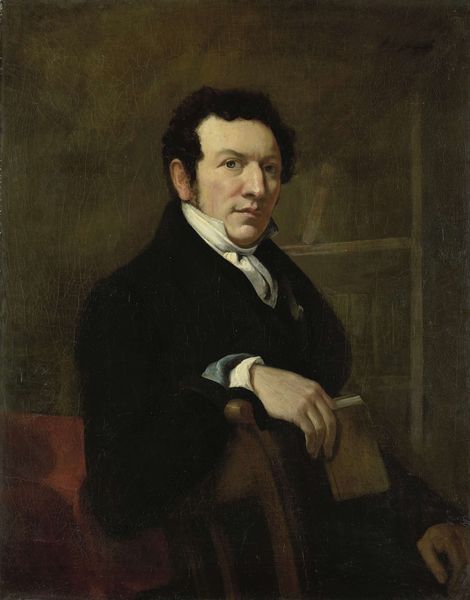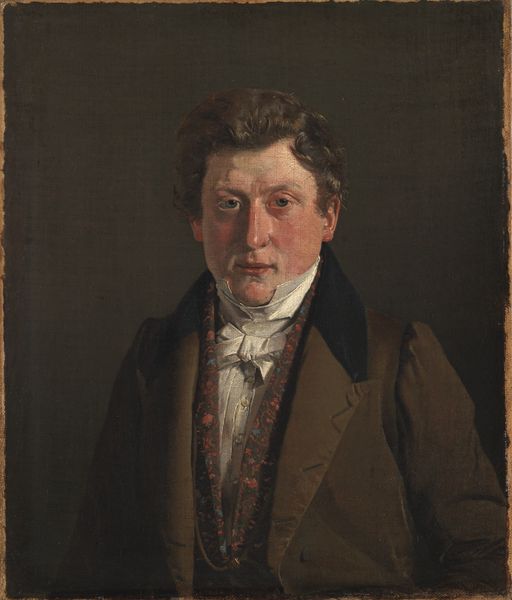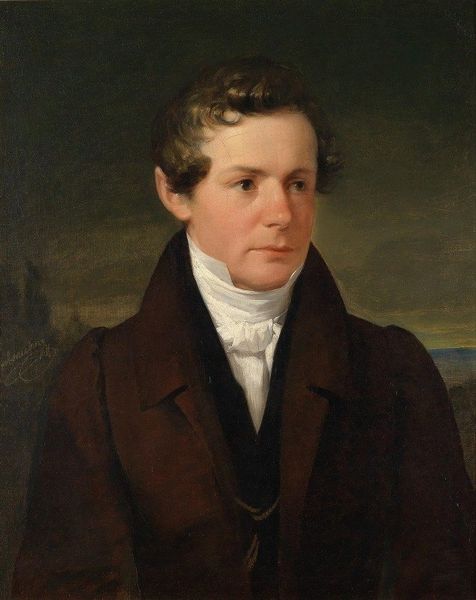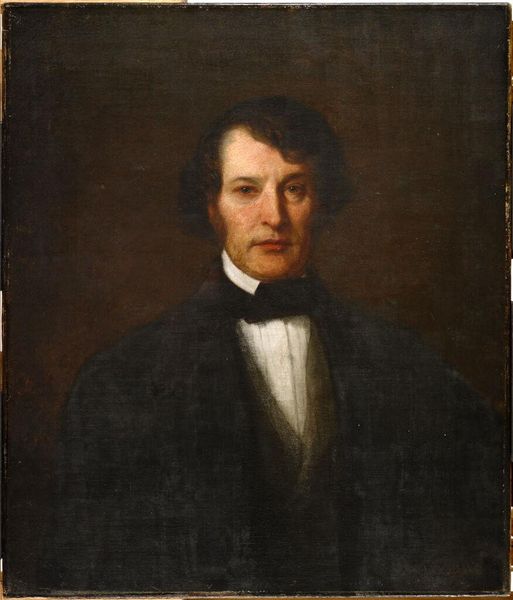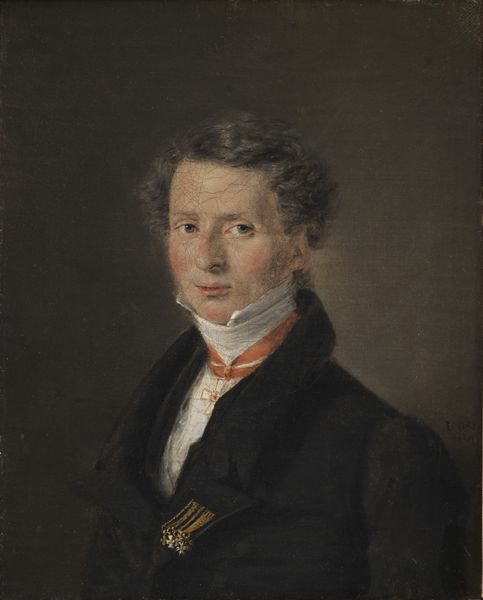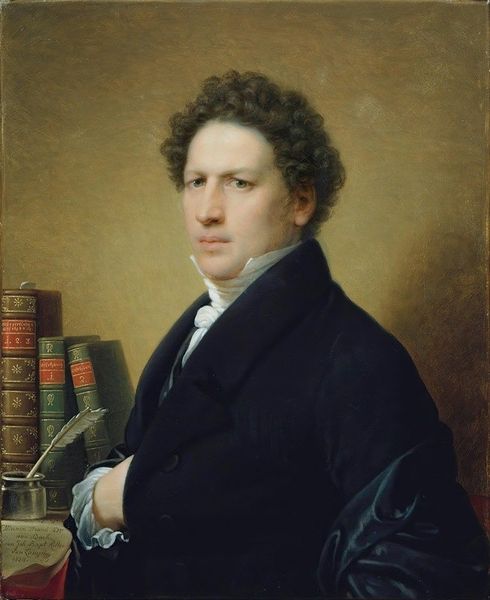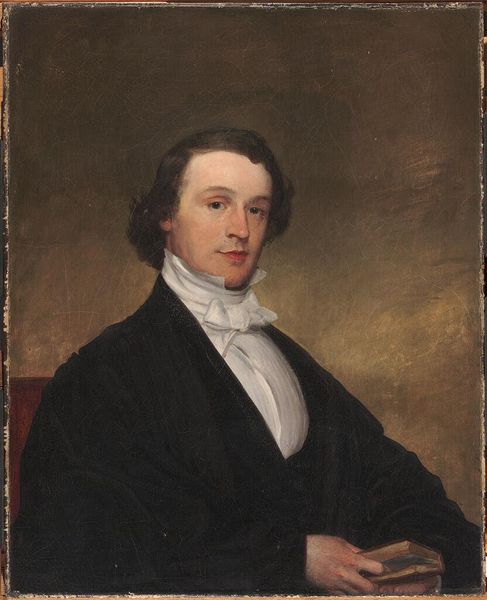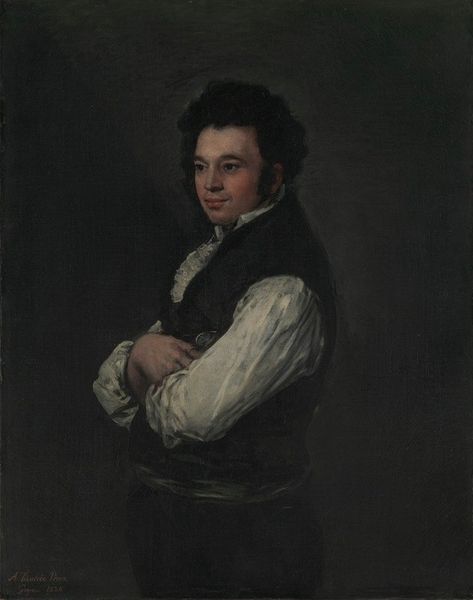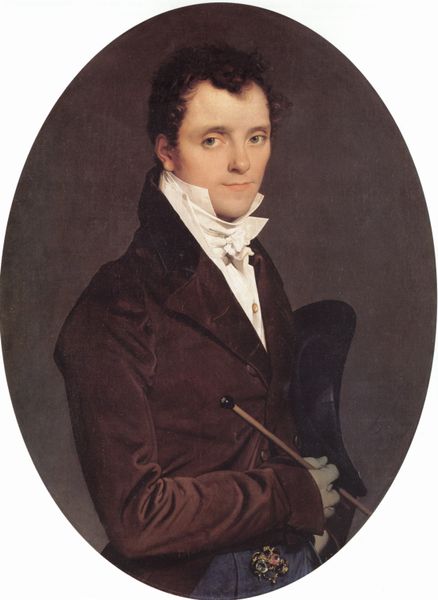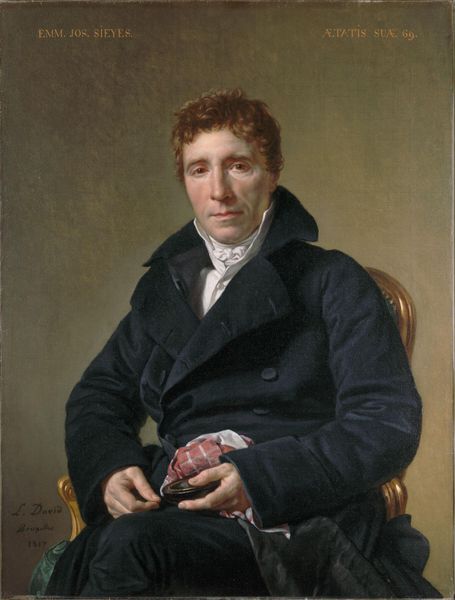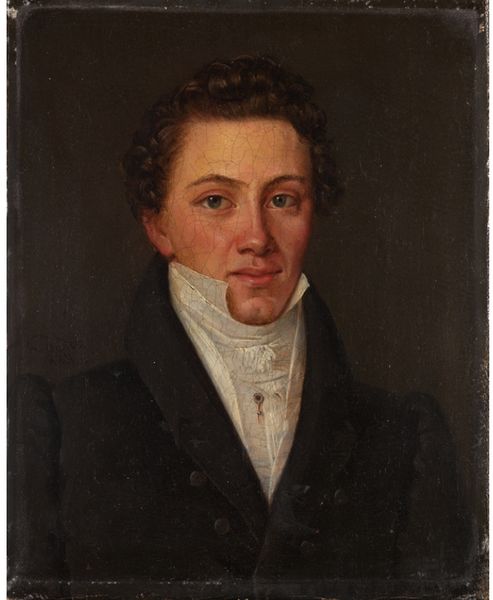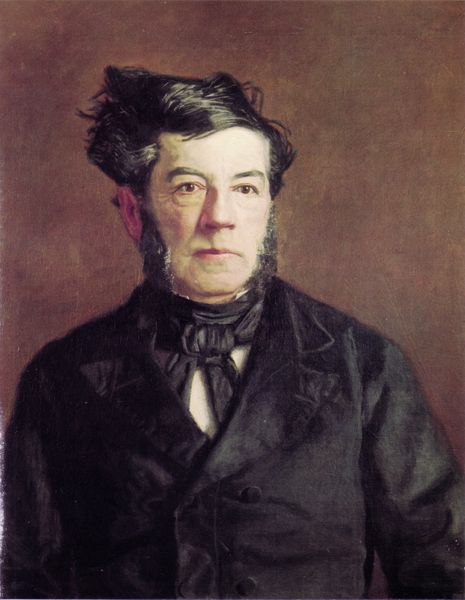
Portrait of the Artist´s Cousin, Michael Christian Petersen 1830 - 1834
0:00
0:00
painting, oil-paint, canvas
#
portrait
#
portrait
#
painting
#
oil-paint
#
figuration
#
canvas
#
romanticism
#
realism
Dimensions: 48.5 cm (height) x 37 cm (width) (Netto)
Curator: Standing before us, we have Christen Købke's "Portrait of the Artist’s Cousin, Michael Christian Petersen," created between 1830 and 1834. It's oil on canvas and housed here at the SMK. It gives an initial sense of almost somberness, wouldn't you agree? A restrained palette and a rather serious sitter. Editor: Restrained is certainly one word for it. I immediately notice the quality of the man's clothing. That dark jacket must be velvet, based on the way light almost seems to sink into it. And look at how the tailor constructed the piece. There’s structure there and a sense of labor dedicated to constructing these fine materials into a presentable image of power for Michael Petersen. Curator: Precisely, and beyond its immediate material presence, that dark jacket creates a symbol of a burgeoning bourgeoisie, of class aspirations perhaps. The dark colors and the meticulously rendered folds speak of established societal codes, wouldn’t you agree? What kind of status symbols are being communicated with that coat? Editor: It certainly communicates the growing reach of a commercial economy, where these items are attainable for some, but created by an entire infrastructure of labor. Consider the chain of production behind it: the materials and tailoring involved, the very act of consuming and commissioning such a garment suggests certain values and priorities are being produced for its owners to display to the world. Curator: Very true, and what about the sitter's gaze? Direct, yet seemingly without arrogance. Købke captures a moment of perhaps self-reflection within the cultural expectations for displaying a certain social rank in this moment. How would you interpret the imagery there? Editor: It hints at the internal constraints alongside outward display. The portrait embodies tensions within Romanticism, grappling with external expectations while subtly expressing the sitter’s own psychological state, perhaps suggesting an underlying unease or restraint beneath the outward respectability the painting communicates for audiences across generations. Curator: Well put. It’s interesting how much the materiality of that garment, that simple act of consumption in its specific social milieu can tell us about cultural values in painting, which would be relevant for the symbolism to come alive for viewers today. Editor: Indeed. It allows one to consider an historical era, where a jacket such as that can speak about far more than aesthetics and what it would mean to sit in one's chair to put it on.
Comments
No comments
Be the first to comment and join the conversation on the ultimate creative platform.
